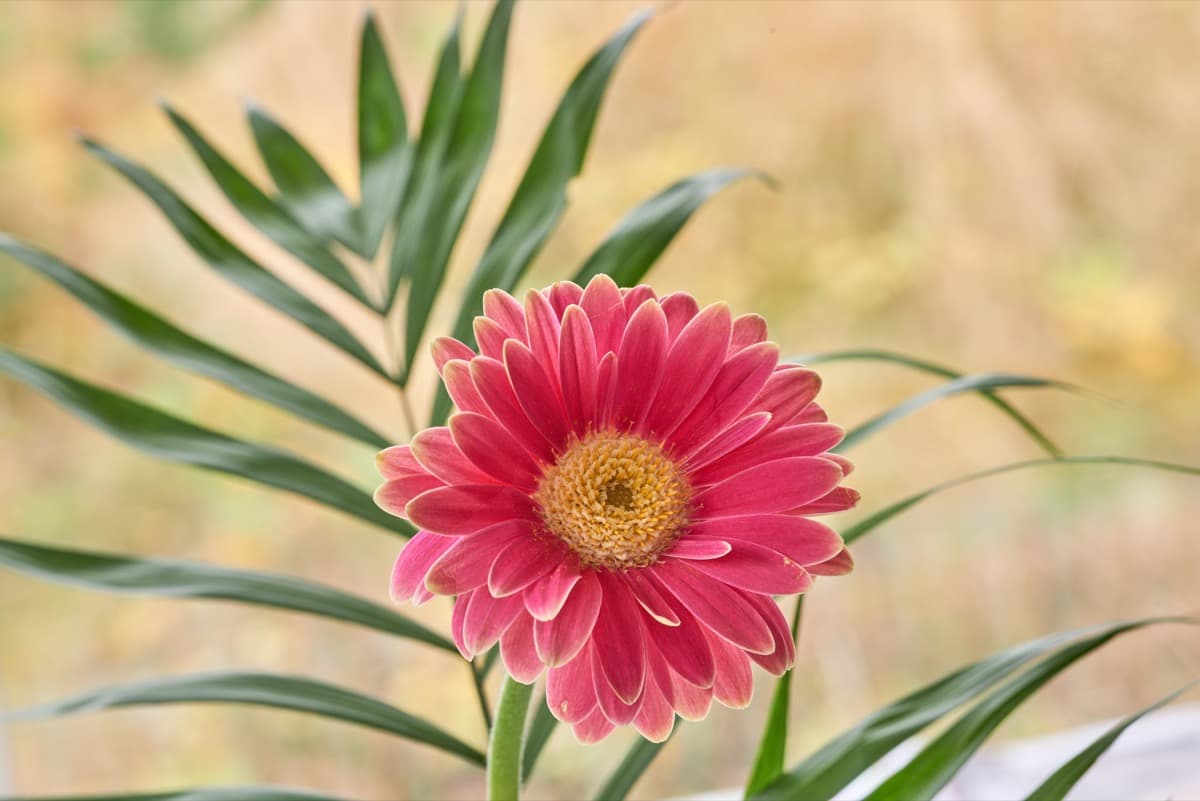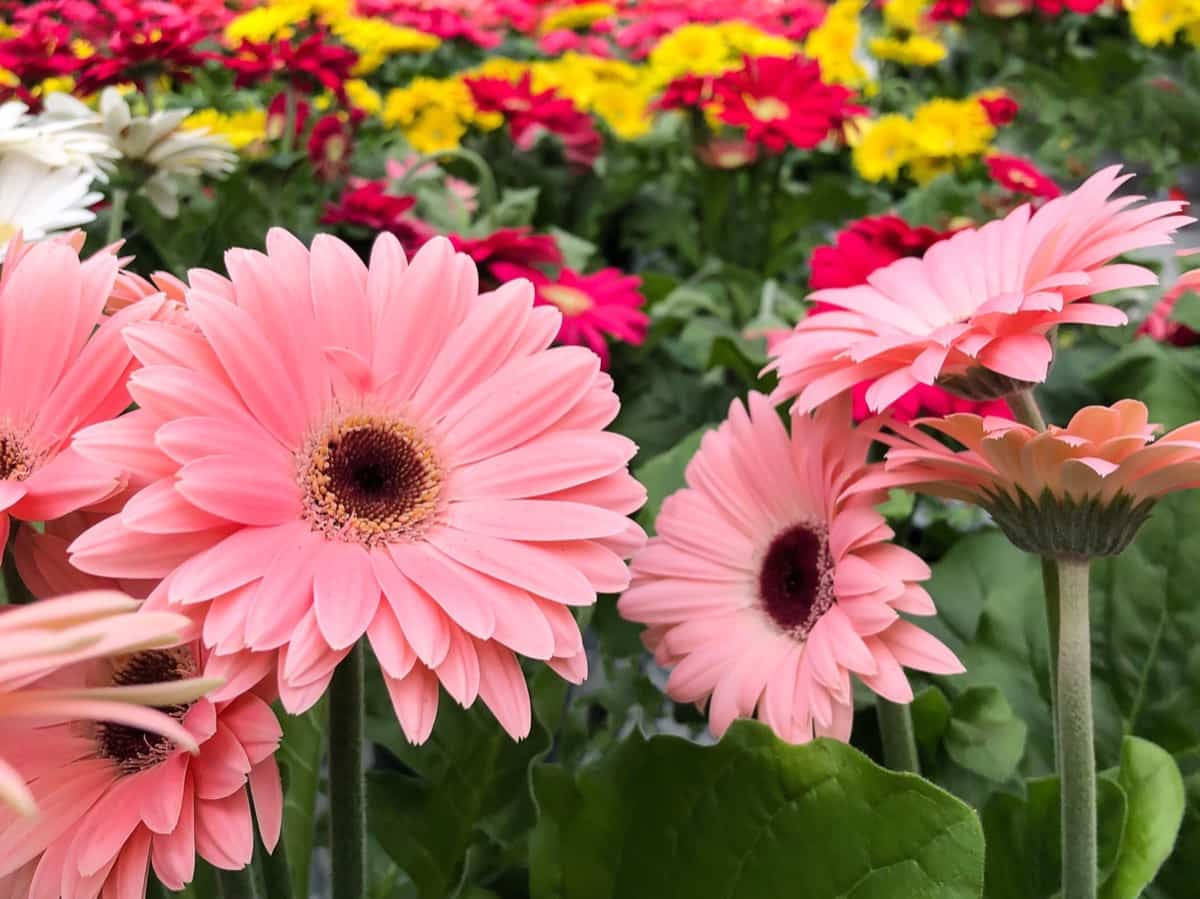Welcome to our blog post on Common Gerbera Plant Diseases! Gerberas are beautiful garden additions with their stunning blooms and various varieties. Still, like any plant, they can be attacked by a range of common diseases that can hinder their beauty and health. This blog post aims to discuss the top 10 common gerbera plant damaging diseases, including their symptoms, treatments, prevention, and management. So, buckle up to explore these gerbera plants’ ten most common diseases.

Important Points to Identify & Manage Diseases in Gerbera Plants for Beginners
- Identifying the disease: The first step is identifying the disease infesting your gerbera plant so that you can approach it with the most effective control method.
- Regular Monitoring: Monitor your gerbera plants regularly for signs of diseases. This will help you to identify an infestation early when it is easier to control.
- Sanitation: Remove the infected plant debris and burn them.
- Natural Control: Several natural control methods can help to manage diseases. These include plant extracts, essential oils, composting, and organic fungicides.
- Chemical Control: If natural controls are ineffective, use fungicides as a last resort, and follow the label instructions and dosage carefully.
10 Common Gerbera Plant Damaging Diseases
Anthracnose Disease in Gerbera Plant
- Disease Symptoms by Colletotrichum gloeosporioides: Circular to irregularly shaped spots with dark brown or black centers and reddish-brown margins appear on the leaves. Infected plants show extensive leaf browning, defoliation, necrosis, stem lesions, girdling, wilting, dieback, and flower and fruit rot.
- Survival and Spread: Colletotrichum gloeosporioides prefers a warm and humid environment of 25-30°C. Overhead irrigation, poor air circulation, plant stress, injuries, debris, and overcrowding contribute to the disease.
- Treatment, Maintenance, and Control Measures: Spray azoxystrobin, pyraclostrobin, propiconazole, tebuconazole, copper sulfate, copper oxychloride, thiophanate-methyl, or mancozeb. Treat with bio-fungicides like Trichoderma spp. and Bacillus subtilis.
Stem Rot Disease in Gerbera Plant
- Disease Symptoms by Sclerotinia sclerotiorum: The characteristic feature is the presence of sclerotia and the development of white, cottony fungal growth on the infected stems. The base of the stem becomes water-soaked, soft, mushy and can easily be crushed by hand. Infected plants show flower lesions, wilting, chlorosis, stunted growth, and death.
- Survival and Spread: Sclerotinia sclerotiorum prefers moderate temperatures and moist conditions of 15-25°C for their growth and reproduction. Prolonged leaf wetness, higher plant density, overwatering, plant debris, and airborne spore dispersal can contribute to the disease.
- Treatment, Maintenance, and Control Measures: Spray carbendazim, metalaxyl, propiconazole, tebuconazole, boscalid, azoxystrobin, and thiophanate-methyl. Drench the soil with Trichoderma spp. and Bacillus subtilis.
Foot Rot Disease in Gerbera Plant
- Disease Symptoms by Phytophthora cryptogea: The disease primarily affects the roots and crown of Gerbera plants. Infected plants show leaf wilting, chlorosis, root discoloration, decay, water-soaked symptoms, and crown rot.
- Survival and Spread: Phytophthora cryptogea prefers a mildly warm and humid climate of 15-25°C. Soil-borne oospores, excess moisture, poor drainage, plant stress, dense canopy, overhead irrigation, and poor airflow contribute to the disease.
- Treatment, Maintenance, and Control Measures: Spray metalaxyl, mefenoxam, dimethomorph, fluopicolide, fosetyl-aluminum, and phosphorous acid. Maintain adequate drainage and follow crop rotation and proper sanitation.
Powdery Mildew Disease in Gerbera Plant
- Disease Symptoms by Erysiphe cichoracearum and Oidium erysiphoides f.sp. gerbera: The characteristic symptom of the disease is the white or grayish powdery fungal growth on the leaves, stems, and flowers. Infected plants show a powdery or dusty appearance, leaf distortion, stunted growth, chlorosis, curling, premature dropping, and reduced flowering.
- Survival and Spread: Erysiphe and Oidium spp prefers warm temperatures, high humidity of 20-25°C, and >60% humidity for spore germination. Prolonged leaf wetness, poor airflow, shade, plant stress, and overcrowding create an ideal environment.
- Treatment, Maintenance, and Control Measures: Spray myclobutanil, tebuconazole, propiconazole, sulfur, azoxystrobin, trifloxystrobin, chlorothalonil, and mancozeb. Use biocontrol agents like Bacillus subtilis, Trichoderma spp, and Ampelomyces quisqualis.
In case you missed it: 10 Common Gerbera Plant Damaging Pests: Symptoms, Treatment, Prevention, and Management

Verticillium Wilt Disease in Gerbera Plant
- Disease Symptoms by Verticillium dahliae: One of the primary symptoms is the wilting and yellowing of leaves. The affected plants show leaf chlorosis, vascular discoloration, wilting, stunted growth, and necrosis.
- Survival and Spread: Verticillium dahliae prefers moderate temperatures and humid climates of 20-25°C for reproduction and survival. Waterlogging, neutral to slightly acidic soils (pH 6.0 to 7.0), loamy or sandy texture, weeds, plant debris, and plant stresses are ideal for the pathogen.
- Treatment, Maintenance, and Control Measures: Spray azoxystrobin, cyprodinil, fludioxonil, and thiophanate-methyl. Practice soil solarization, crop rotation, sanitation, and avoid excess nitrogen fertilization.
Alternaria Leaf Spot Disease in Gerbera Plant
- Disease Symptoms by Alternaria alternata: The lesions are water-soaked and dark brown to black with a concentric ring pattern, surrounded by a yellow halo. The affected plants show leaf chlorosis, defoliation, wilting, stem lesions, and spores with a velvety texture.
- Survival and Spread: Alternaria alternata prefers a warm and humid climate of 20-30°C and >70% humidity for spore production. Overcrowding, poor air circulation, plant stress, overhead irrigation, and plant debris contribute to disease spread.
- Treatment, Maintenance, and Control Measures: Spray chlorothalonil, thiophanate-methyl, mancozeb, copper sulfate, copper oxychloride, and carbendazim. Avoid overhead watering and inspect plants regularly.
Bacterial Leaf Spot Disease in Gerbera Plant
- Disease Symptoms by Xanthomonas campestris pv. pelargonii: The characteristic symptom is the development of water-soaked, angular leaf lesions. Infected plants show leaf chlorosis, defoliation, spotting, deformation, premature dropping, and stem cankers.
- Survival and Spread: Xanthomonas campestris prefers warm and humid weather of 25-30°C for survival. Prolonged leaf wetness, overhead irrigation, high plant density, poor air circulation, injuries, and plant debris create a conducive environment for the disease.
- Treatment, Maintenance, and Control Measures: Spray copper hydroxide, copper oxychloride, copper sulfate, streptomycin sulfate, and oxytetracycline hydrochloride. Apply Systemic Acquired Resistance (SAR) Inducers like Acibenzolar-S-methyl, Potassium phosphite, and practice plant spacing.
Blossom Blight or Grey Mold Disease in Gerbera Plant
- Disease Symptoms by Botrytis cinerea: The characteristic symptom is the water-soaked lesions on the flowers. Infected areas may appear withered, slimy and become sunken. Infected plants show leaf blight, stem blight, flower blight, and a fuzzy gray or brown mold growth.
- Survival and Spread: Botrytis cinerea prefers moderate temperatures, high humidity of 15-25°C, and >85% humidity for spore germination and infection. Prolonged Leaf Wetness, plant debris, plant stress, overcrowding, and poor air circulation contribute to the disease.
- Treatment, Maintenance, and Control Measures: Spray copper hydroxide, copper sulfate, benomyl, thiophanate methyl, iprodione, vinclozolin, azoxystrobin, tebuconazole, and propiconazole. Use biocontrol agents like Bacillus subtilis, Trichoderma spp, and Ampelomyces quisqualis.
Fusarium Wilt Disease in Gerbera Plant
- Disease Symptoms by Fusarium oxysporum: The primary symptom is the sudden and progressive wilting of the entire plant or specific branches. Infected plants show leaf wilting, chlorosis, vascular discoloration, stunted growth, and death.
- Survival and Spread: Fusarium oxysporum prefers warm and moist soil of 25-30°C for survival. They prefer slightly acidic to neutral soils with a pH range of 5.5 to 7.5. Waterlogging, plant debris, poor air circulation, and dense canopy create an ideal environment for the disease’s spread.
- Treatment, Maintenance, and Control Measures: Spray thiophanate-methyl, propiconazole, or azoxystrobin. Treat the seeds with Trichoderma spp. and Bacillus spp. Apply soil amendments, such as organic matter or compost.
Root Rot Disease in Gerbera Plant
- Disease Symptoms by Rhizoctonia solani: Root rot disease primarily affects the roots, causing them to become brown, mushy, and rotting. The infected roots show loss of root mass and have a foul odor. Infected plants show leaf chlorosis, wilting, and stunted growth.
- Survival and Spread: Rhizoctonia solani prefers warm and moist soil of 20-30°C for reproduction and survival. Excessive soil moisture, high plant density, poor drainage, injuries, and plant debris provide a conducive environment.
- Treatment, Maintenance, and Control Measures: Spray thiophanate-methyl, benomyl, iprodione, azoxystrobin, propiconazole, and tebuconazole. Treat the seeds with Trichoderma spp, practice plant spacing, and avoid pruning injuries.
In case you missed it: Rose Flower Chaffer Beetle Pest Management: Symptoms, Treatment, Chemical, Biological, and Organic Control

Conclusion
Common gerbera plant diseases include anthracnose, stem rot, foot rot, powdery mildew, verticillium wilt, alternaria leaf spot, bacterial leaf spot, blossom blight, fusarium wilt, and root rot. By identifying the disease, inspecting plants regularly, and using natural control methods, you can help to keep your gerbera plants healthy and beautiful.
- Beneficial Insects in Pest Management
- Natural Solutions for Pest Control in Flower Gardens
- Types of Fungicides Used in Agriculture
- Common Issues in the Fruit Development Stage of Pomegranate Farming
- Fruit Development Issues in Papaya: Easy Solutions and Treatment
- Soil-Borne Diseases and How to Protect Your Plants
- Practices to Prevent Disease Spread in the Garden
- From Wilted to Thriving: How to Treat Root Rot Naturally in Houseplants
- Natural Remedies to Cure Brown Spots on Fig Tree Leaves